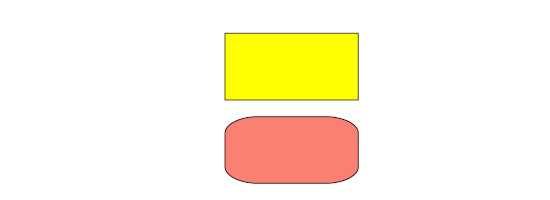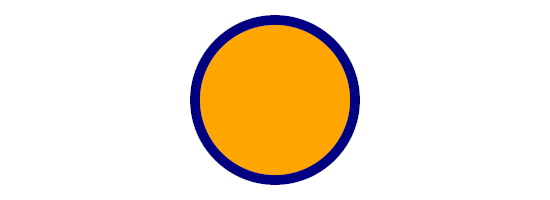Examples
Looking at the source, the line
<rect x="100" y="100" width="400" height="200" fill="yellow" stroke="black" stroke-width="3" />
Describes a rectangle. Here's a brief piece by piece
description of everything in that line:
- rect - the rectangle is declared using a rect element.
- x, y - the co-ordinates of the top left corner of the rectangle.
- width, height - the width and height of the shape. In some cases, these can be expressed as percentages (such as "20%").
- fill - the colour to use for the interior of the shape. Colours are explained in more detail in a later section.
- stroke - the colour for the line actually drawn for the rectangle.
- stroke-width - the thickness of the line used to draw the rectangle.

<?xml version="1.0" standalone="no"?>
<!DOCTYPE svg PUBLIC "-//W3C//DTD SVG 1.1//EN" "http://www.w3.org/Graphics/SVG/1.1/DTD/svg11.dtd">
<svg viewBox = "0 0 500 600" version = "1.1">
<rect x = "100" y = "100" width = "400" height = "200" fill = "yellow" stroke = "black" stroke-width = "3"/>
<rect x = "100" y = "350" rx = "100" ry = "50" width = "400" height = "200" fill = "salmon" stroke = "black" stroke-width = "3"/>
</svg>
<!DOCTYPE svg PUBLIC "-//W3C//DTD SVG 1.1//EN" "http://www.w3.org/Graphics/SVG/1.1/DTD/svg11.dtd">
<svg viewBox = "0 0 500 600" version = "1.1">
<rect x = "100" y = "100" width = "400" height = "200" fill = "yellow" stroke = "black" stroke-width = "3"/>
<rect x = "100" y = "350" rx = "100" ry = "50" width = "400" height = "200" fill = "salmon" stroke = "black" stroke-width = "3"/>
</svg>
The next simple example is a circle. It works in a similar way to the rect, look at the line
<circle cx="100" cy="100" r="80" fill="orange" stroke="navy" stroke-width="10" />
This is what each part of that line does:
- circle - the element that we're using
- cx, cy - the co-ordinates of the center of the circle.
- r - the circle radius.
- fill - the colour to use for the interior of the shape. Colours are explained in more detail in a later section.
- stroke - the colour of the circle outline.
- stroke-width - the thickness of the line used to trace the circle.

<?xml version="1.0" standalone="no"?>
<!DOCTYPE svg PUBLIC "-//W3C//DTD SVG 1.1//EN" "http://www.w3.org/Graphics/SVG/1.1/DTD/svg11.dtd">
<svg viewBox = "0 0 200 200" version = "1.1">
<circle cx = "100" cy = "100" r = "80" fill = "orange" stroke = "navy" stroke-width = "10"/>
</svg>
<!DOCTYPE svg PUBLIC "-//W3C//DTD SVG 1.1//EN" "http://www.w3.org/Graphics/SVG/1.1/DTD/svg11.dtd">
<svg viewBox = "0 0 200 200" version = "1.1">
<circle cx = "100" cy = "100" r = "80" fill = "orange" stroke = "navy" stroke-width = "10"/>
</svg>